June 17, 2025
The importance of multilingual education
Were you aware that approximately 50% of the world’s population is bilingual or multilingual? In an increasingly globalised world, languages have become more and more important when it comes to unlocking new opportunities, both professionally and in terms of social and cognitive development.
Multilingual education thus becomes a fundamental pillar for ensuring that all children and young people can enjoy quality learning from primary school onwards, regardless of their mother tongue or the linguistic and cultural contexts in which they find themselves.
Are you familiar with this teaching methodology? In this article, we explain in detail what bilingual education is, the advantages it offers and how it can be implemented in the classroom.
What is multilingual education?
Multilingual education is a key tool for educating conscientious and competent global citizens. It promotes the learning of more than one language, respects linguistic diversity and favours inclusion, cultural identity and the comprehensive development of the learner.
Definition of multilingual education
Multilingual education is the process of teaching and learning in more than one language, using different languages simultaneously within the educational context. It is a methodology that includes both the teaching of academic content in different languages and the promotion of linguistic diversity in the classroom. It is underpinned by the premise that learners can access knowledge and develop skills in several languages without any one language being a barrier.
In multilingual environments, in addition to the learner’s mother tongue, other languages are also included, which enables them to become familiar with different cultures and ways of thinking.
It is a methodology that can have a very positive impact on students, especially when implemented from the earliest stages of education. Through multilingual education, students develop stronger cognitive skills, such as creativity, problem-solving and critical thinking.
Differences between bilingualism and multilingualism
Although they are often confused, bilingualism and multilingualism are not the same.
- Bilingualism is the ability of an individual to communicate fluently in two languages, i.e. to speak, read and write in both languages at the same level. It allows them to interact with people from different linguistic backgrounds.
- Multilingualism, on the other hand, is the ability to handle three or more languages, which, when applied to education, can broaden the intercultural perspectives and the academic and employment opportunities of students.
Advantages of multilingual education
Multilingual education offers a number of social, academic and cognitive benefits that can be valuable tools for coping with the challenges of adult life.
Cognitive and social benefits
Multilingual education helps to substantially improve the cognitive development of students.
- Learning and using several languages activates different areas of the brain, improving skills such as concentration, memory and problem solving. By switching between different languages, multilingual people develop greater mental flexibility and a superior ability to manage different tasks at the same time.
- In addition, learning several languages also helps to develop empathy. By being exposed to different cultures and ways of thinking, children learn to value and understand diversity, developing a broader perspective of the world around them.
- On a social level, multilingual education facilitates communication with people from other countries, promoting integration between different communities.
Advantages in academic and professional development
Studies have shown that students who learn in several languages have a higher reading comprehension and a greater ability to tackle complex problems. Furthermore, performance in areas such as science and mathematics is also enhanced, as the cognitive flexibility developed by learning several languages carries over into other areas of knowledge.
From a professional point of view, fluency in several languages can lead to many job opportunities, as companies place a high value on employees who can communicate in different languages and who can talk to international clients and collaborators. In fact, in many cases, it can be decisive in securing a job.
Implementing multilingualism in the classroom
The benefits of multilingual education are self-evident, but it is important to bear in mind that effective implementation in the classroom requires qualified teaching staff and careful planning, from curriculum design to developing educational policies that support the learning of different languages.
Teaching methods and resources
In order to integrate multilingualism effectively into the classroom, teachers can employ different teaching strategies.
- One of the most common is the immersion approach, where students are exposed to a second language from an early age and learn it naturally.
- In addition, the use of digital technologies and online platforms can enrich the teaching process, through interactive resources and tools that promote more autonomous learning.
- Another effective strategy is project-based learning, where students work in groups to solve problems or create projects using several languages. This also promotes skills such as collaboration, creativity and critical thinking.
Teacher training and institutional support
Teachers should receive specific training on how to teach in a multilingual environment, using pedagogical methods appropriate for each language and level of education.
Additionally, educational institutions should establish policies that support multilingualism by providing teaching materials in different languages and encouraging an inclusive environment that celebrates diversity.
At the same time, extra-curricular activities, cultural exchanges and school-to-school collaboration programmes can strengthen language learning outside the classroom and provide students with an even more effective language immersion experience.
As such, multilingual education is not only a powerful tool for improving the academic and personal performance of students, but also for fostering social inclusion and more sustainable development.
However, as we have already indicated, for this methodology to be truly effective, it is essential that educational policies and pedagogical practices are aligned with the principles of multilingualism, providing the younger generations with the necessary tools to face the challenges of an increasingly interconnected world.
